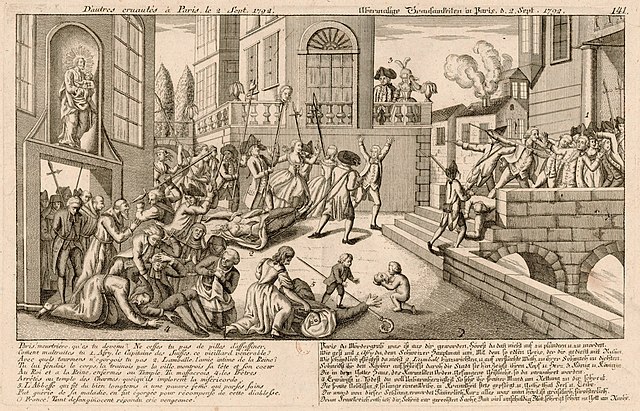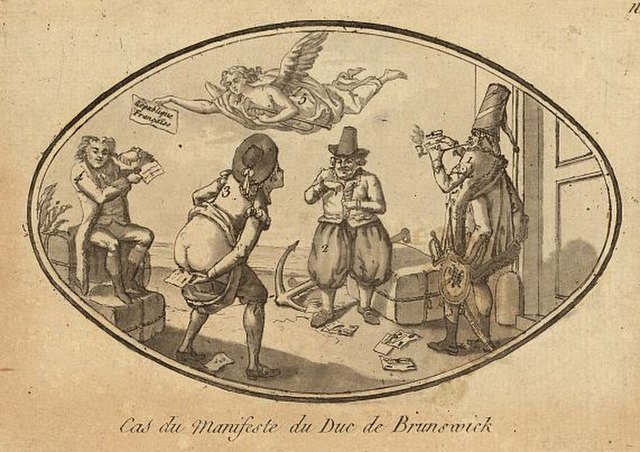The September Massacres were a series of killings and summary executions of prisoners in Paris that occurred in 1792, from Sunday, 2 September until Thursday, 6 September, during the French Revolution. Between 1,176 and 1,614 people were killed by sans-culottes, fédérés, and guardsmen, with the support of gendarmes responsible for guarding the tribunals and prisons, the Cordeliers, the Committee of Surveillance of the Commune, and the revolutionary sections of Paris.
Contemporary engraving depicting the killing of priests, nuns and Princess de Lamballe. Captions with poems condemning the massacres in French and German.
Anonymous caricature depicting the treatment given to the Brunswick Manifesto by the French population
115 priests were killed in the Carmes prison. Le massacre des Carmes by Marie–Marc–Antoine Bilcocq, (1820). Musée de la Révolution française
Prison de l'Abbaye where 160–220 people were killed in three days. It was located between Rue de Bussi and Rue du Four (E40), with the entrance on Rue Sainte-Marguerite, today 133, Boulevard Saint-Germain.
The French Revolution was a period of political and societal change in France that began with the Estates General of 1789, and ended with the coup of 18 Brumaire in November 1799 and the formation of the French Consulate. Many of its ideas are considered fundamental principles of liberal democracy, while its values and institutions remain central to modern French political discourse.
The Storming of the Bastille, 14 July 1789
Caricature of the Third Estate carrying the First Estate (clergy) and the Second Estate (nobility) on its back
Le Serment du Jeu de paume by Jacques-Louis David (c. 1791), depicting the Tennis Court Oath
The Storming of the Bastille on 14 July 1789; the iconic event of the Revolution, still commemorated each year as Bastille Day








